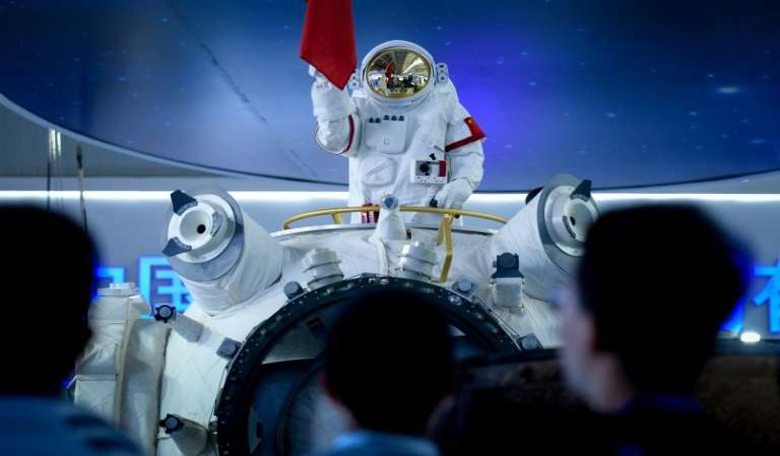At the country’s biennial aerospace fair in Zhuhai this week, China unveiled a partial replica of its ‘Heavenly Palace,’ a 60-tonne orbiting space lab that is the nation’s answer to the International Space Station (ISS).
The International Space Station – a collaboration between the United States, Russia, Canada, Europe and Japan – has been in operation since 1998 and has become a symbol for international cooperation between the world’s largest space-faring nations. Despite the odd mishap, the station is constantly occupied and is a hub for ongoing multidisciplinary experiments that are quite literally out of this world.
But its days are numbered. No matter how essential this floating laboratory has become to advance our understanding of, amongst many things, how the harsh conditions of space can affect humans when exposed over long periods of time, there is not enough money left in the pot to keep it going.
Step forward China. China already has experience with Earth-orbiting space stations. It sent up the Tiangong-1, the country’s first prototype space lab, in September 2011, where it spent nearly seven years in space before plunging back to Earth in April this year amid claims that China had lost control of the station.
But with the ISS due to cease operations by the end of 2024, a gap in the space station market will be open and China is set to fill it.
With assembly expected to be completed around 2022, a sneak preview of the 17-metre (55-foot) core module wowed audiences at China’s main aerospace industry exhibition in the southern coastal city of Zhuhai. The full working version however will be somewhat smaller than the ISS, which is as large as a football pitch and weighs a whopping 400 tonnes.
The latest ”Heavenly Palace" incarnation will also have two other modules for scientific experiments and it will be able to house three astronauts on a permanent basis to conduct biological and microgravity research.
And China is not keeping the space station all to itself. Earlier this year, the country announced that the lab would be open to "all countries" to conduct science experiments and the European Space Agency has already sent astronauts to China for training so that they can use the space station once it is up and running.
"There is no doubt that China will use its station in a similar way as the ISS partners are using their outpost: research, technology and as a stepping-stone for deep-space exploration," said Chen Lan, analyst at GoTaikonauts.com, a website specialised in the Chinese space programme.
According to state media, some 40 plans from 27 countries and regions have been received from research institutes, universities, and public and private companies that are hoping to utilise the Heavenly Palace as they would have with the ISS.
"The ability to put payloads and experiments on a human spaceflight platform is extremely valuable,” said Bill Ostrove, space analyst with US-based Forecast International consultancy. "Many countries, and increasingly private companies and universities, have space programmes, but cannot afford to build their own space station. I'm sure over time China will be successful in developing partnerships," he said.











